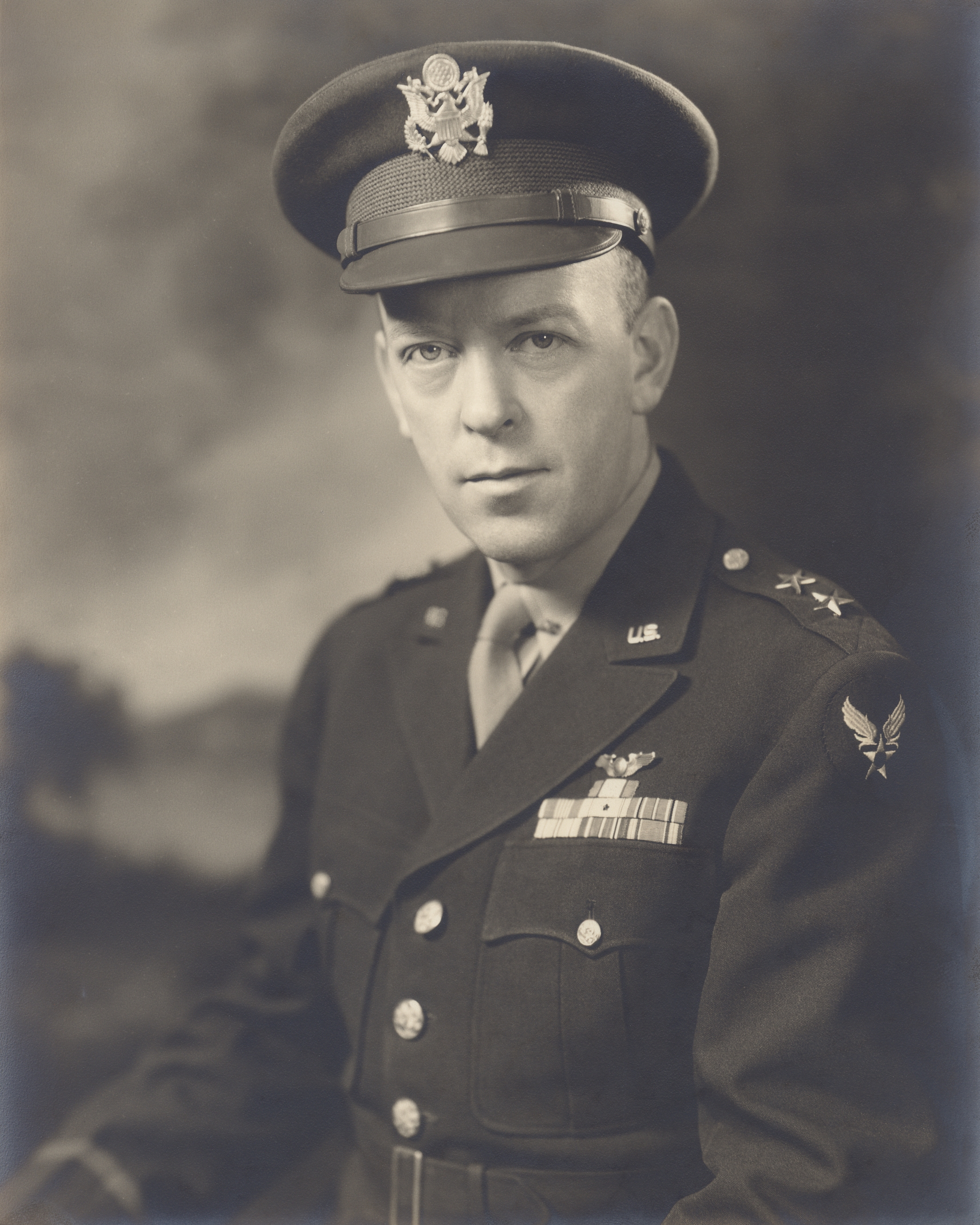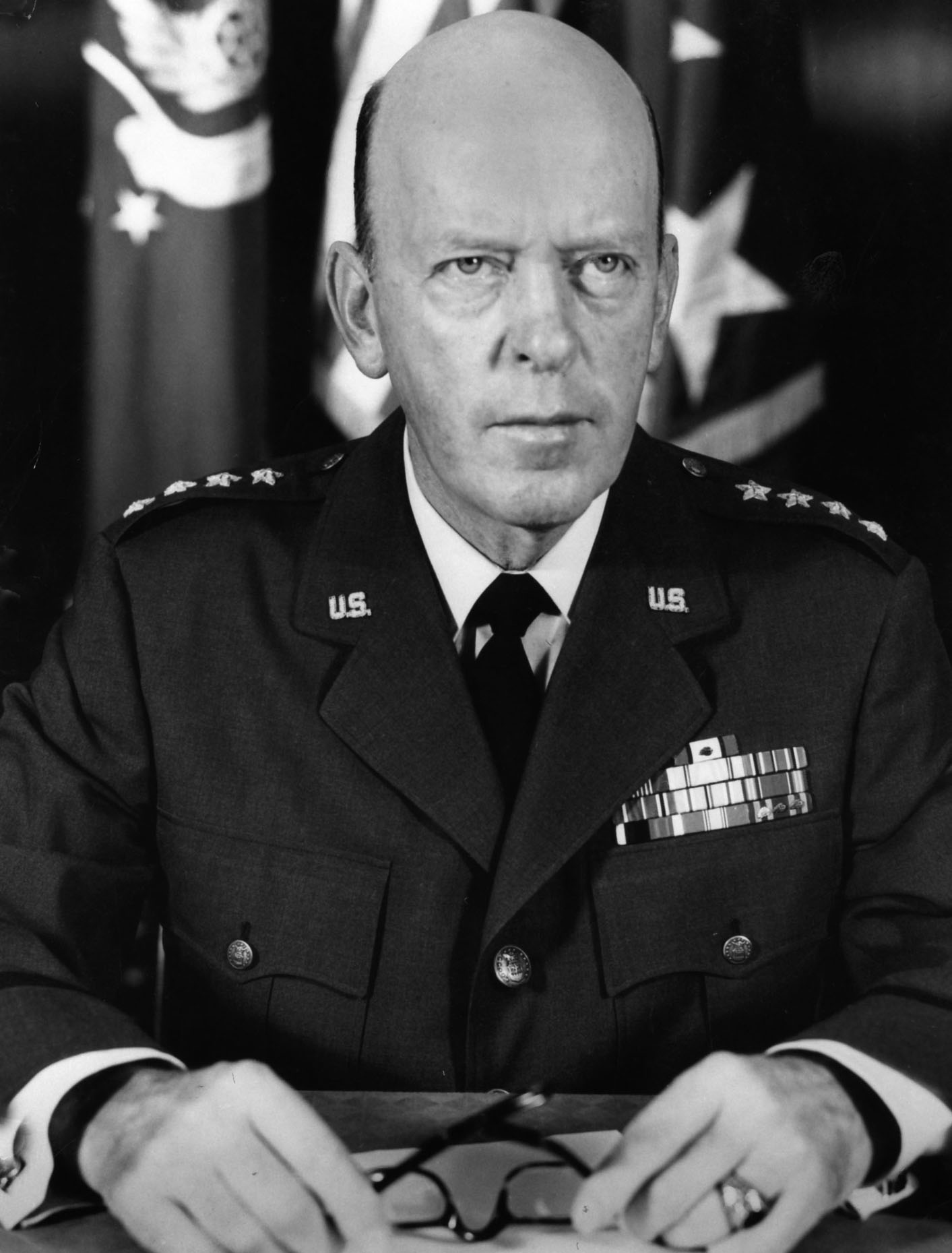William F. McKee on:
[Wikipedia]
[Google]
[Amazon]
William Fulton McKee (October 17, 1906 – February 28, 1987) was a
 In January 1946, he was appointed chief of staff of
In January 1946, he was appointed chief of staff of 
/ref> After leaving the FAA, he was president of Schriever-McKee Associates (later Schriever & McKee, Inc.) in Arlington, Virginia from 1968 to 1987. He died on February 28, 1987, in San Antonio, Texas after a brief illness. His wife died in 1990, and both he and Gertrude were buried atBurial Detail: McKee, William
– ANC Explorer
United States Air Force
The United States Air Force (USAF) is the Aerial warfare, air military branch, service branch of the United States Armed Forces, and is one of the eight uniformed services of the United States. Originally created on 1 August 1907, as a part ...
four-star general
A four-star rank is the rank of any four-star officer described by the NATO OF-9 code. Four-star officers are often the most senior commanders in the armed services, having ranks such as (full) admiral, (full) general, colonel general, army ge ...
who served as Commander, Air Force Logistics Command (COMAFLC) from 1961 to 1962; and Vice Chief of Staff, U.S. Air Force (VCSAF) from 1962 to 1964. He later served as the Federal Aviation Administration
The Federal Aviation Administration (FAA) is the largest transportation agency of the U.S. government and regulates all aspects of civil aviation in the country as well as over surrounding international waters. Its powers include air traffic ...
Administrator from 1965 to 1968.
Military career
McKee was born atChilhowie, Virginia
Chilhowie is a town in Smyth County, Virginia, United States, on the Middle Fork of the Holston River. The population was 1,781 at the 2010 census. The name Chilhowie is said to come from a Cherokee word meaning "valley of many deer". It is also n ...
, in 1906. He graduated from the United States Military Academy
The United States Military Academy (USMA), also known metonymically as West Point or simply as Army, is a United States service academy in West Point, New York. It was originally established as a fort, since it sits on strategic high groun ...
at West Point, New York, and was commissioned a second lieutenant in the Coast Artillery Corps
The U.S. Army Coast Artillery Corps (CAC) was an administrative corps responsible for coastal, harbor, and anti-aircraft defense of the United States and its possessions between 1901 and 1950. The CAC also operated heavy and railway artillery ...
of the United States Army
The United States Army (USA) is the land warfare, land military branch, service branch of the United States Armed Forces. It is one of the eight Uniformed services of the United States, U.S. uniformed services, and is designated as the Army o ...
June 13, 1929.
His first assignment upon graduation was with the 13th Coast Artillery at Fort Barrancas
Fort Barrancas (1839) or Fort San Carlos de Barrancas (from 1787) is a United States military fort and National Historic Landmark in the former Warrington area of Pensacola, Florida, located physically within Naval Air Station Pensacola, which wa ...
, Florida. He then went to Fort Randolph in the Panama Canal Zone where he served as a battery officer in the First Coast Artillery. After two years service at that station, he was transferred to the 63rd Coast Artillery at Fort MacArthur
Fort MacArthur is a former United States Army installation in San Pedro, Los Angeles, California (now the port community of Los Angeles). A small section remains in military use by the United States Air Force as a housing and administrative annex ...
, California, where he served as battery commander, assistant adjutant of the Harbor Defenses of Los Angeles, and later executive officer of the Civilian Conservation Corps
The Civilian Conservation Corps (CCC) was a voluntary government work relief program that ran from 1933 to 1942 in the United States for unemployed, unmarried men ages 18–25 and eventually expanded to ages 17–28. The CCC was a major part of ...
in that area.
In September 1935, he became a student at the Coast Artillery School at Fort Monroe, Virginia
Fort Monroe, managed by partnership between the Fort Monroe Authority for the Commonwealth of Virginia, the National Park Service as the Fort Monroe National Monument, and the City of Hampton, is a former military installation in Hampton, Virgi ...
, and upon completion of the course the following June, was assigned to Fort Mills
Fort Mills ( Corregidor, the Philippines) was the location of US Major General George F. Moore's headquarters for the Philippine Department's Harbor Defenses of Manila and Subic Bays in early World War II, and was the largest seacoast ...
, Corregidor, Philippine Islands; as regimental adjutant, plan training and intelligence officer, and battery commander of the 63rd Coast Artillery.
Returning to the United States in October 1938, he was assigned to the Presidio of San Francisco, California, as an assistant to G-2, Ninth Corps Area.
The following October, he was again ordered to foreign duty - this time at Fort Buchanan, Puerto Rico, where he became battery commander and later commanding officer of the 66th Coast Artillery, transferring with that organization to Borinquen Field
Ramey Air Force Base is a former United States Air Force base in Aguadilla, Puerto Rico. It was named after United States Army Air Forces Brigadier General Howard Knox Ramey. Following its closure, it was redeveloped into Rafael Hernandez Airp ...
, Puerto Rico. Later he became executive officer of the Caribbean Interceptor Command under Major General Follett Bradley
Follett may refer to:
Places
* County of Follett, Australia
* Electoral district of Normanby, Dundas and Follett, one of the 16 original electoral districts of Victoria
* Follett, Texas
* Follett High School, in Follett, Texas
* Follett Inde ...
.
In October 1941, he returned to the United States for assignment to the 71st Coast Artillery at Fort Story
Joint Expeditionary Base-Fort Story, commonly called simply Fort Story is a sub-installation of Joint Expeditionary Base Little Creek–Fort Story, which is operated by the United States Navy. Located in the independent city of Virginia Beach, Vi ...
, Virginia, as a battalion commander and regimental adjutant of the First Battalion. He later performed the same duties when his division moved to the Naval Operating Base at Norfolk, Virginia.
In January 1942, he was assigned to Headquarters Army Air Forces and was later appointed chief of the Anti-Aircraft and Airdrome Defense Section and Anti-Aircraft Artillery Division. Shortly thereafter, he became executive officer for the Directorate of Air Defense.
In November 1943, he became deputy assistant chief of Air Staff for operations, commitments, and requirements, which corresponds roughly to the present Office of the Deputy Chief of Staff, Operations.
 In January 1946, he was appointed chief of staff of
In January 1946, he was appointed chief of staff of Air Transport Command
Air Transport Command (ATC) was a United States Air Force unit that was created during World War II as the strategic airlift component of the United States Army Air Forces.
It had two main missions, the first being the delivery of supplies and ...
with headquarters at Washington. The following August he went to Europe as commanding general of the European Division, ATC, with station at Paris, France. In December 1946 he transferred to Headquarters U.S. Air Force in Europe at Wiesbaden, Germany, and the following month became commanding general of the Headquarters Command of USAFE at Wiesbaden.
Returning to the United States in August 1947, he was appointed assistant vice chief of staff of the U.S. Air Force on September 27, 1947.
He was assigned to Headquarters Air Materiel Command
Air Materiel Command (AMC) was a United States Army Air Forces and United States Air Force command. Its headquarters was located at Wright-Patterson Air Force Base, Ohio. In 1961, the command was redesignated the Air Force Logistics Command wi ...
as vice commander on June 10, 1953.
On April 1, 1961, Air Materiel Command was redesignated Air Force Logistics Command.
On August 1, 1961, McKee became a four-star general and assumed the post of commander, Air Force Logistics Command.
On July 1, 1962, McKee moved to Washington and became vice chief of staff of the Air Force. McKee was awarded the Distinguished Service Medal with oak leaf cluster. He was presented the first annual Distinguished Management Award of the Air Force Association on July 31, 1957. He retired from the Air Force on July 31, 1964.

Military awards and decorations
Among Rodríguez's decorations were the following:Effective dates of promotion
Source:Post-military career
After retiring from the military, McKee briefly served as the assistant administrator for management development at NASA, and in 1965 was chosen by President Johnson to head the Federal Aviation administration.Gen. William McKee, ex-F.A.A. Head, Dies/ref> After leaving the FAA, he was president of Schriever-McKee Associates (later Schriever & McKee, Inc.) in Arlington, Virginia from 1968 to 1987. He died on February 28, 1987, in San Antonio, Texas after a brief illness. His wife died in 1990, and both he and Gertrude were buried at
Arlington National Cemetery
Arlington National Cemetery is one of two national cemeteries run by the United States Army. Nearly 400,000 people are buried in its 639 acres (259 ha) in Arlington, Virginia. There are about 30 funerals conducted on weekdays and 7 held on Sa ...
.– ANC Explorer
References
{{DEFAULTSORT:McKee, William F. 1906 births 1987 deaths United States Air Force generals Administrators of the Federal Aviation Administration United States Military Academy alumni Burials at Arlington National Cemetery Civilian Conservation Corps people People from Chilhowie, Virginia Vice Chiefs of Staff of the United States Air Force United States Army personnel of World War II Recipients of the Distinguished Service Medal (US Army) Lyndon B. Johnson administration personnel Military personnel from Virginia